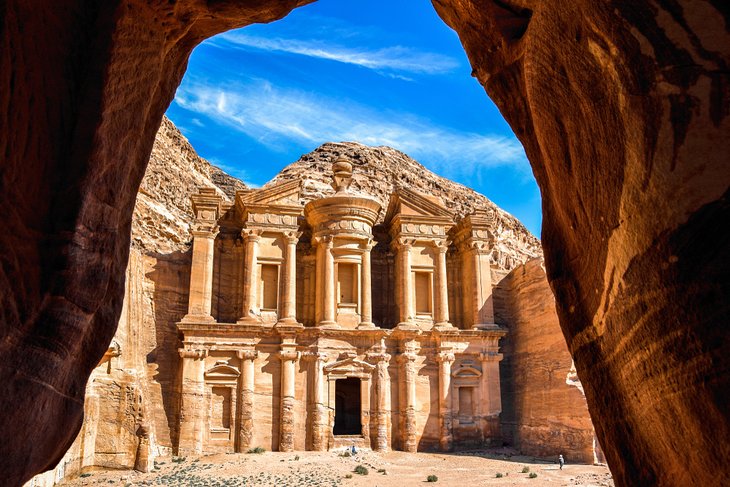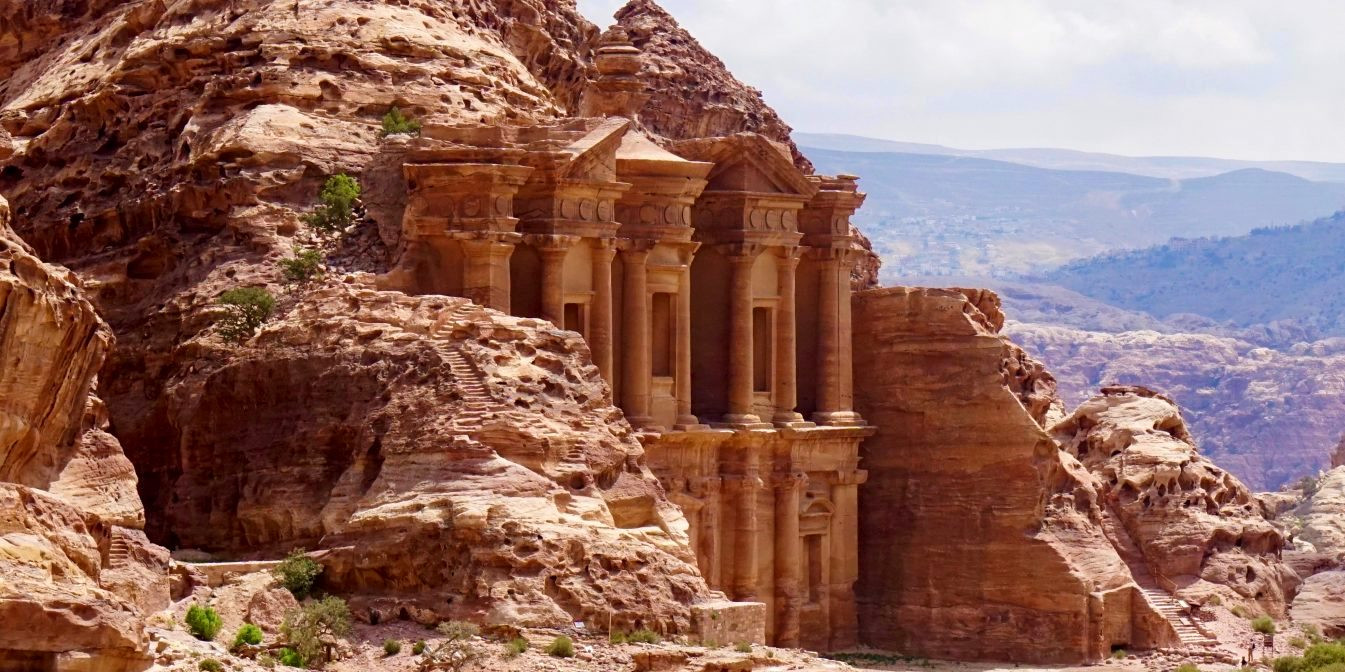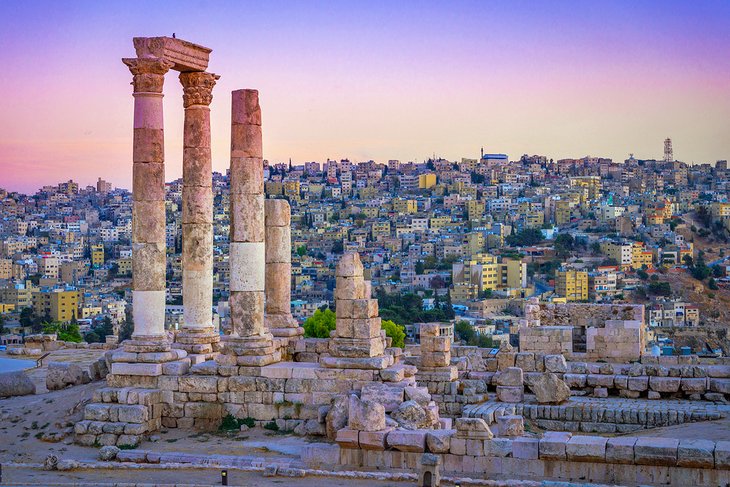
Jordan, a land where ancient history breathes alongside vibrant modernity, offers an unparalleled travel experience. Nestled at the crossroads of civilizations, this captivating Middle Eastern kingdom is a tapestry woven with rose-red cities carved into cliffs, vast desert landscapes echoing with Bedouin tales, and the serene, buoyant embrace of the Dead Sea. More than just a collection of stunning sights, Jordan is a journey for the soul, a testament to enduring human ingenuity, profound spirituality, and an unwavering spirit of hospitality that leaves an indelible mark on every visitor.
From its biblical landscapes and Roman ruins to the contemporary buzz of its capital, Amman, Jordan promises an adventure that is as diverse as it is deeply enriching. This article will guide you through the kingdom’s top attractions, delve into its storied past, equip you with essential travel tips, explore accommodation and transportation options, and pinpoint the best time to embark on your Jordanian odyssey.
A Journey Through Time: Jordan’s Rich History

Related Articles about Jordan: A Journey Through Time, Wonder, and Unforgettable Hospitality:
- Land of a Thousand Lakes and Northern Lights: Unveiling Finland’s Top Attractions
- Lombok: A Traveler’s Guide to Paradise Found
- Unveiling the Wonders of Oz: Your Ultimate Guide to Australia’s Top Attractions
- The Grand American Adventure: Unlocking the Wonders of the United States
- Bangkok: The Eternal City of Angels – A Comprehensive Travel Guide
Jordan’s strategic location has made it a crucible of civilizations for millennia, each leaving an indelible mark on its landscape and culture. Its history is not merely confined to textbooks; it is alive, tangible, and visible at every turn.
The earliest human settlements in Jordan date back to the Stone Age, but it was the Nabataeans, an industrious Arab people, who carved their legendary capital, Petra, into the sandstone cliffs over 2,000 years ago. Their sophisticated water management systems and intricate rock-cut architecture speak volumes of a prosperous trading empire that controlled lucrative incense routes.
Following the Nabataeans, the Roman Empire exerted its influence, integrating much of Jordan into its vast dominion. Cities like Jerash flourished, becoming part of the Decapolis, a league of ten Greco-Roman cities. Grand temples, theatres, colonnaded streets, and public baths from this era stand remarkably preserved, offering a vivid glimpse into Roman urban planning and daily life.
Jordan also holds immense Biblical significance. It is the land where Moses viewed the Promised Land from Mount Nebo, where Elijah ascended to heaven, and where John the Baptist is believed to have baptized Jesus Christ at Bethany Beyond the Jordan. These sites draw pilgrims and history enthusiasts alike, connecting them to narratives that have shaped global faiths.
With the advent of Islam in the 7th century, Jordan became part of the Islamic Caliphates. The Umayyad dynasty, in particular, left behind exquisite desert castles, such as Qasr Amra, showcasing early Islamic art and architecture. Later, the region became part of the Ottoman Empire for several centuries.
The early 20th century saw Jordan play a pivotal role in the Arab Revolt against Ottoman rule, famously aided by Lawrence of Arabia. This period paved the way for the establishment of the Hashemite Kingdom of Jordan in 1946, a modern nation that skillfully balances its ancient heritage with progressive aspirations, maintaining peace and stability in a often-turbulent region.
Unveiling Jordan’s Crown Jewels: Top Attractions
Jordan’s attractions are a testament to its multifaceted identity, offering everything from ancient wonders to natural marvels and vibrant urban experiences.
1. Petra: The Rose-Red City, A UNESCO World Heritage Site

Undoubtedly Jordan’s most iconic destination, Petra is an archaeological marvel that needs no introduction. Carved directly into vibrant sandstone cliffs by the Nabataeans, this ancient city was "lost" to the Western world for centuries before its rediscovery in 1812.
- The Siq: Your journey begins with a walk through the Siq, a winding, narrow gorge flanked by towering cliffs. The anticipation builds with every turn until the first glimpse of the Treasury.
- Al-Khazneh (The Treasury): This breathtaking facade, intricately carved with Hellenistic influences, is Petra’s most famous monument. Its purpose remains debated, but its beauty is undeniable.
- The Monastery (Ad Deir): A more strenuous climb rewards you with a monumental façade even larger than the Treasury, offering panoramic views of the surrounding mountains and valleys.
- Royal Tombs, Street of Facades, Roman Theatre: Beyond the famous highlights, Petra boasts a vast complex of tombs, temples, and an impressive Roman-era theatre, showcasing the city’s scale and sophistication.
- Tips for Visiting: Allocate at least two full days to explore Petra thoroughly. Wear comfortable walking shoes, bring plenty of water, and consider a sunrise or sunset visit for magical lighting. The "Petra by Night" experience (specific nights only) is also enchanting.
2. Wadi Rum: The Valley of the Moon
Venture south of Petra and you enter the ethereal landscape of Wadi Rum, a UNESCO World Heritage desert wilderness often described as Martian. This dramatic landscape of towering sandstone and granite mountains, vast sand dunes, and narrow canyons has been home to Bedouin tribes for millennia.
- Jeep Tours: The most popular way to explore Wadi Rum is by 4×4 jeep, allowing you to visit stunning rock formations, ancient inscriptions, and natural arches.
- Bedouin Hospitality: Experience authentic Bedouin culture with a traditional meal and overnight stay in a desert camp. Stargazing under the unpolluted desert sky is an unforgettable highlight.
- Activities: Camel treks, hot air balloon rides, hiking, and rock climbing are also popular activities.
- Tips for Visiting: Book your tour and accommodation with a reputable local Bedouin guide or camp. Bring layers of clothing as desert nights can be cool, even after hot days.
3. The Dead Sea: A Natural Wonder
The lowest point on Earth, the Dead Sea is a hyper-saline lake renowned for its therapeutic properties and unique floating experience. Its mineral-rich waters and mud are believed to have healing benefits for skin and joint conditions.
- Floating Experience: Due to its extreme salinity (nearly ten times saltier than ocean water), you can effortlessly float on the surface, making for a truly surreal and relaxing experience.
- Spa Treatments: Many resorts along the Dead Sea offer luxurious spa treatments utilizing the mineral-rich mud and waters.
- Tips for Visiting: Avoid getting water in your eyes or mouth, as it stings intensely. Don’t shave before swimming. Bring water shoes as the salt crystals can be sharp.
4. Amman: The Bustling Capital
Jordan’s vibrant capital is a fascinating blend of ancient history and modern dynamism. Spread across multiple hills, Amman offers a captivating urban experience.
- The Citadel: Perched atop one of Amman’s highest hills, the Citadel offers panoramic views of the city and houses remnants of Roman, Byzantine, and Umayyad civilizations, including the Temple of Hercules and the Umayyad Palace.
- Roman Theatre: A remarkably well-preserved 2nd-century Roman theatre, still used for cultural events, capable of seating 6,000 spectators.
- Rainbow Street: A lively street in Jabal Amman, known for its cafes, restaurants, art galleries, and boutique shops, offering a glimpse into contemporary Jordanian life.
- Food Scene: Explore the city’s diverse culinary offerings, from traditional Jordanian mansaf to delicious falafel and knafeh.
- Tips for Visiting: Explore the downtown area on foot to soak in the atmosphere. Taxis are readily available and affordable for longer distances.
5. Jerash: The Roman Decapolis City
Just an hour’s drive north of Amman lies Jerash, one of the best-preserved Roman provincial cities in the world. Often called the "Pompeii of the Middle East," its extensive ruins offer a vivid insight into Roman urban planning.
- Oval Plaza: A magnificent, unique oval-shaped forum surrounded by columns, marking the entrance to the main street.
- Cardo Maximus: A colonnaded street stretching for 800 meters, still bearing the ruts of ancient chariot wheels.
- Temples and Theatres: Explore the grand Temple of Artemis, the Temple of Zeus, and two impressive Roman theatres, one of which still hosts annual festivals.
- Tips for Visiting: Allow at least half a day to explore Jerash. Guided tours provide valuable historical context.
6. Mount Nebo: A Biblical Vista
A site of immense religious significance, Mount Nebo is believed to be where Moses stood and viewed the Promised Land before his death.
- Moses Memorial Church: A modern basilica built over the remains of a 4th-century church, housing stunning Byzantine mosaics.
- Panoramic Views: On a clear day, the summit offers breathtaking views across the Jordan Valley, the Dead Sea, Jericho, and even Jerusalem.
- Tips for Visiting: Combine a visit to Mount Nebo with Madaba, known for its mosaic map of the Holy Land.
7. Aqaba: Red Sea Paradise
Jordan’s only coastal city, Aqaba, offers a refreshing contrast to the desert and ancient ruins. It’s a vibrant resort town on the shores of the Red Sea, renowned for its crystal-clear waters and rich marine life.
- Diving and Snorkeling: Aqaba is a world-class destination for scuba diving and snorkeling, with vibrant coral reefs, shipwrecks, and an abundance of colorful fish.
- Beaches: Relax on public or private beaches, enjoy watersports, or take a glass-bottom boat tour.
- Aqaba Fort & Mamluk Castle: Explore the historical fort, linked to the Arab Revolt, and the nearby Aqaba Castle.
- Tips for Visiting: Aqaba is a duty-free zone, making it a good spot for shopping. Enjoy fresh seafood at local restaurants.
8. Bethany Beyond the Jordan: Baptism Site
Recognized by UNESCO as the authentic site of Jesus Christ’s baptism by John the Baptist, this spiritual sanctuary is a place of profound pilgrimage.
- Archaeological Discoveries: Ongoing excavations have unearthed churches, chapels, and baptismal pools dating back to the Roman and Byzantine periods.
- Spiritual Significance: Visitors can reflect on the site’s importance, walk down to the Jordan River, and witness baptisms.
- Tips for Visiting: Dress respectfully (shoulders and knees covered). Combine with a visit to the Dead Sea due to proximity.
Planning Your Jordanian Adventure: Practical Travel Tips
To ensure a smooth and enjoyable trip, keep these practical tips in mind:
- Visa & Jordan Pass: Most nationalities require a visa. The Jordan Pass is highly recommended; it includes your visa fee (if you stay 3 nights or more) and entry to over 40 attractions, including Petra, Jerash, and Wadi Rum, offering significant savings. Purchase it online before arrival.
- Currency: The local currency is the Jordanian Dinar (JOD), typically pegged to the US dollar. ATMs are widely available in cities and larger towns. Credit cards are accepted in most hotels and larger establishments, but cash is essential for smaller shops and taxis.
- Language: Arabic is the official language. English is widely spoken in tourist areas, hotels, and among younger generations. Learning a few basic Arabic phrases (e.g., "Shukran" for thank you, "Marhaba" for hello) is always appreciated.
- Safety: Jordan is one of the safest countries in the Middle East, with a very low crime rate, especially against tourists. Jordanians are incredibly welcoming and protective of visitors. Exercise standard travel precautions.
- Dress Code: While Jordan is a modern Muslim country, modest dress is appreciated, especially when visiting religious sites or outside of resort areas. For women, covering shoulders and knees is advisable. In tourist resorts like Aqaba or the Dead Sea, swimwear is perfectly acceptable.
- Cultural Sensitivity: Embrace the local culture. Jordanians are renowned for their hospitality; accepting offers of tea or coffee is a gesture of goodwill. Bargaining is common in souqs (markets).
- Food & Drink: Tap water is generally not safe to drink; stick to bottled water. Explore Jordanian cuisine – try Mansaf (the national dish), Mezze platters, falafel, and kunafa (a sweet cheese pastry).
- Connectivity: Local SIM cards are affordable and readily available at the airport or mobile stores, offering good data coverage.
Where to Stay: Accommodation Options
Jordan offers a wide range of accommodation to suit every budget and travel style:
- Luxury Hotels: Amman, the Dead Sea, and Aqaba boast a selection of international five-star hotels with excellent amenities.
- Boutique Hotels & Guesthouses: Found in Amman’s older neighborhoods (like Jabal Weibdeh or Jabal Amman) and smaller towns, offering a more personalized and authentic experience.
- Budget Hostels: Available in Amman and Wadi Musa (Petra) for backpackers and budget travelers.
- Bedouin Camps: In Wadi Rum, staying overnight in a traditional (or glamping-style) Bedouin camp under the stars is an absolute must-do experience.
- Resorts: The Dead Sea and Aqaba are home to numerous resorts, many offering private beach access, spas, and family-friendly facilities.
Getting Around: Transportation in Jordan
Navigating Jordan is relatively straightforward, with several reliable options:
- Rental Car: For maximum flexibility and to explore off-the-beaten-path destinations, renting a car is highly recommended. Roads are generally well-maintained, and signage is in both Arabic and English. Driving is on the right.
- Taxis & Ride-sharing: In Amman, taxis are plentiful and metered. Ride-sharing apps like Uber and Careem are also available and convenient.
- JETT Buses: JETT offers comfortable and reliable inter-city bus services connecting major tourist destinations like Amman, Petra (Wadi Musa), Aqaba, and the Dead Sea. Booking in advance is advisable.
- Private Drivers: Hiring a private driver for a day or your entire trip is a popular and convenient option, especially for groups or those who prefer not to drive. Your hotel can usually arrange this, or you can find reputable companies online.
- Walking: Many of Jordan’s ancient sites, like Petra and Jerash, are best explored on foot. Within Amman, walking is excellent for exploring specific neighborhoods.
The Golden Window: Best Time to Visit
Choosing the right time to visit Jordan can significantly enhance your experience:
- Spring (March to May): This is widely considered the best time to visit. Temperatures are pleasantly warm, the landscapes are lush and green after winter rains, and wildflowers bloom across the country. It’s ideal for hiking in Petra and Wadi Rum.
- Autumn (September to November): Another excellent period, with comfortable temperatures similar to spring. The summer heat has subsided, making outdoor activities enjoyable.
- Summer (June to August): Can be very hot, especially in the desert and Dead Sea regions, with temperatures often exceeding 40°C (104°F). However, if you plan activities for early mornings and late afternoons and are comfortable with heat, it’s still doable, and tourist crowds are smaller. Aqaba is popular for beach holidays during this time.
- Winter (December to February): Cooler temperatures prevail, with some rain, especially in the north and central regions. Amman and the mountainous areas can even experience occasional snowfall. Petra can be chilly, but often beautiful with fewer crowds. The Dead Sea and Aqaba remain relatively mild, making them good winter escapes.
Conclusion: Jordan Awaits
Jordan is more than just a destination; it’s an immersive experience that engages all the senses and leaves an indelible mark on the heart. From the awe-inspiring grandeur of Petra and the serene majesty of Wadi Rum to the profound spiritual resonance of its biblical sites and the vibrant pulse of Amman, this kingdom offers a journey unlike any other. Its rich history, breathtaking natural beauty, and above all, the genuine warmth and hospitality of its people, combine to create an unforgettable adventure. Pack your bags, open your mind, and prepare to be enchanted – Jordan awaits.





